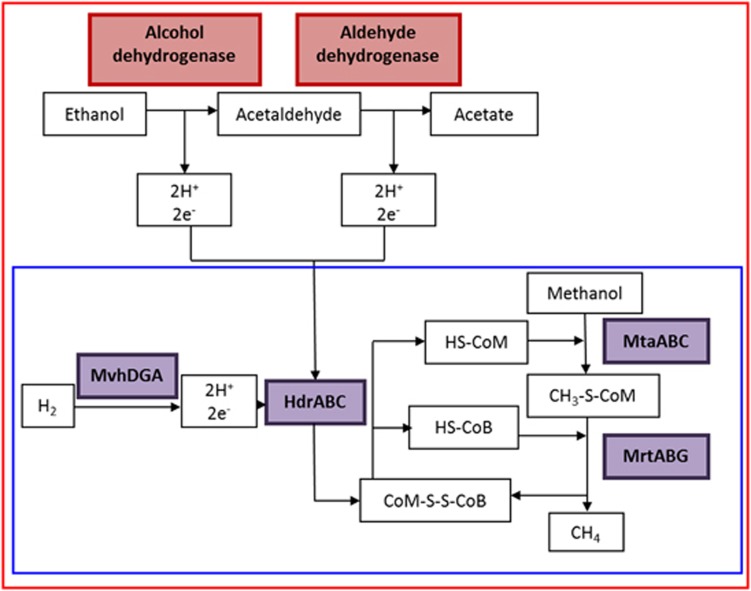Figure 8.
A model for methanol reduction via hydrogen (blue box) or ethanol (red box) present in Methanosphaera sp. WGK6, based on the results of the genomic and culture-based results presented in this study. The reduction of methanol is initiated by coenzyme M methyltransferase (MtaABC) and coenzyme M (HS-CoM), which produces 2-(methylthio)ethanesulfonic acid (CH3-S-CoM). Methyl-coenzyme M reductase (MrtABG) reduces the product CH3-S-CoM with coenzyme B (HS-CoB) to methane and coenzyme M-HTP heterodisulfide (CoM-S-S-CoB). Heterodisulfide reductase (HdrABC) then acts on CoM-S-S-CoB using 2e− and 2H+ to reduce the disulfide bond thus regenerating HS-CoM and HS-CoB. The necessary electrons and hydrogen protons are generated by non-F420-reducing hydrogenase (MvhADG) from hydrogen. Alternatively, Methanosphaera sp. WGK6 can use a two-step oxidation process with ethanol, performed by the cotranscribed alcohol and aldehyde dehydrogenases, which would result in the provision of four protons and electrons used to reduce two methanol groups to methane and with acetate as an end product.

